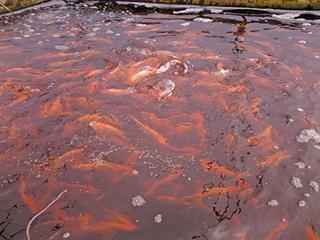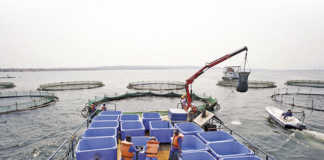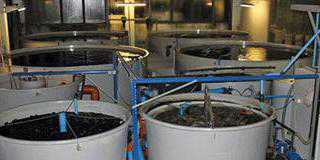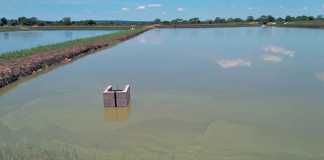
It is generally accepted that feed constitutes 40% to 60% of all recurring expenses in a re-circulating aquaculture system (RAS). This is a very high figure, so wastage cannot be tolerated. If, for some unknown reason, your stock is growing poorly, and the environmental conditions are not conducive to the fishes’ best growth potential, you cannot compensate by giving more feed! This way, you will rapidly turn a profitable business into a loss-making one. Stock quality, water quality management and feed quality are all crucial and equally important.
In a country such as Zambia, there are several feed mills manufacturing acceptable quality tilapia pellets. In this regard, South Africa is far behind the rest of Africa. At most larger feed mills, manufacturing tilapia feed is a sideline operation, and little interest is shown in producing a quality product.
Until recently, there were two main producers of pelletised tilapia feed, but one mill recently closed down. There are also several smaller producers. Overall, the quality of the pellets is highly variable. I have even found a dog biscuit in a bag of tilapia feed! Was the feed manufactured according to the correct formula and then the dog biscuit fell in by accident on the production line, or was the tilapia feed simply recycled dog food?
Several customers have reportedly had the protein content and other constituents in their feed re-analysed – only to find that a claimed protein content of 35% was 28% or less. Is the aquaculture industry being fobbed off with poor quality products at ever-increasing prices?

A range of pellets suitable for tilapia feeding. All five have exactly the same protein content (45%).
Investment and research
Fortunately, there are exceptions. Recent attempts have been made to produce tilapia pellets more professionally. The North-West University (Potchefstroom Campus) and an Eastern Cape-based feed mill are both investing in the necessary equipment and professional advice to produce a range of quality fish feed. While this is a considerable investment, the industry cannot grow without it. Due to the cost, importation is only viable for the more sophisticated low-volume feed, not bulk grow-out pellets.
The University of Swaziland recently completed research on maggot meal as a substitute for fish meal in tilapia feed. Preliminary tests indicate that this is a viable option. This may present an exciting business opportunity for an entrepreneur. The basic ingredient of maggot meal (offal) is available at low to zero cost from abattoirs around the country. Chicken producers in particular have a problem disposing of offal and would do well to investigate this opportunity.
Other sources of feed, such as earthworms and duckweed, should also be investigated. Earthworms would appear to be the obvious choice, but they not really viable, as producing a few kilograms of earthworms a day will not make a significant difference to the feed bill of an aquaculture project – they have to be produced on a huge scale.
Nicholas James is an ichthyologist and hatchery owner.













